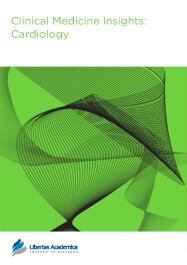

Publication Date: 06 Oct 2011
Type: Review
Journal: Clinical Medicine Insights: Cardiology
Citation: Clinical Medicine Insights: Cardiology 2011:5 103-119
doi: 10.4137/CMC.S6677

Dronedarone is an amiodarone analog but differs structurally from amiodarone in that the iodine moiety was removed and a methane-sulfonyl group was added. These modifications reduced thyroid and other end-organ adverse effects and makes dronedarone less lipophilic, shortening its half-life. Dronedarone has been shown to prevent atrial fibrillation/flutter (AF/AFl) recurrences in several multi-center trials. In addition to its rhythm control properties, dronedarone has rate control properties and slows the ventricular response during AF. Dronedarone is approved in Europe for rhythm and rate control indications. In patients with decompensated heart failure, dronedarone treatment increased mortality and cardiovascular hospitalizations. However, when dronedarone was used in elderly high risk AF/AFl patients excluding such high risk heart failure, cardiovascular hospitalizations were significantly reduced and the drug was approved in the USA for this indication in 2009 by the Food and Drug Administration. Updated guidelines suggest dronedarone as a front-line antiarrhythmic in many patients with AF/Fl but caution that the drug should not be used in patients with advanced heart failure. In addition, the recent results of the PALLAS trial suggest that dronedarone should not be used in the long-term treatment of patients with permanent AF.
PDF (814.54 KB PDF FORMAT)
RIS citation (ENDNOTE, REFERENCE MANAGER, PROCITE, REFWORKS)
BibTex citation (BIBDESK, LATEX)
XML
PMC HTML

I am impressed by the efficiency at each step of submission in the journal. Based on the first-hand experience, I am confident that this journal will have a great future, and the impact factor will rise rapidly.

All authors are surveyed after their articles are published. Authors are asked to rate their experience in a variety of areas, and their responses help us to monitor our performance. Presented here are their responses in some key areas. No 'poor' or 'very poor' responses were received; these are represented in the 'other' category.See Our Results
Copyright © 2013 Libertas Academica Ltd (except open access articles and accompanying metadata and supplementary files.)
Facebook Google+ Twitter
Pinterest Tumblr YouTube